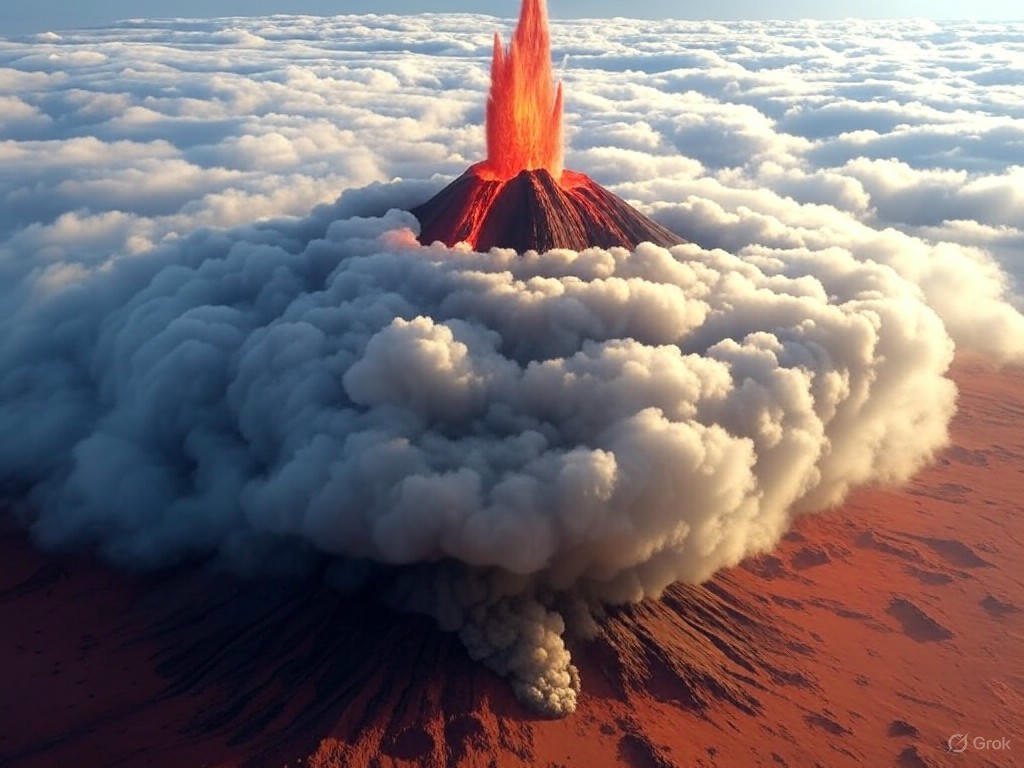Mars’ Towering Giant: A Volcanic Marvel Caught at Dawn
The Red Planet never ceases to amaze with its otherworldly landscapes, and a recent image from NASA’s 2001 Mars Odyssey orbiter has once again captured the imagination of scientists and space enthusiasts alike. On June 10, 2025, the spacecraft snapped a breathtaking view of one of Mars’ most iconic features—a colossal volcano, standing an astonishing 12 miles tall, piercing through a veil of dawn clouds. This striking photograph, showcasing the sheer scale and mystery of the Martian terrain, reminds us of the dynamic forces that have shaped this alien world over billions of years.
This volcanic giant, known as Olympus Mons, is not just any mountain; it holds the title of the largest volcano in our solar system. Towering at a height that dwarfs Earth’s tallest peaks, Olympus Mons stretches across an area roughly the size of Arizona, with a base so vast it could swallow entire cities. What makes this recent image particularly captivating is the timing and perspective. The orbiter caught the volcano at the break of dawn, as sunlight spilled over the horizon, casting long shadows and highlighting the mountain’s immense silhouette against a backdrop of wispy, ethereal clouds. These clouds, likely composed of water ice or dust particles, add a layer of mystique, hinting at the complex atmospheric processes at play on Mars.
The significance of this image goes beyond its visual appeal. It offers scientists a rare glimpse into the interplay between Mars’ geology and atmosphere. Olympus Mons, though long dormant, stands as a testament to the planet’s violent volcanic past. Its enormous size is a result of Mars’ lower gravity and lack of tectonic plate movement, allowing lava to pile up over millions of years without spreading out as it would on Earth. The presence of clouds in the photograph also sparks curiosity about the planet’s climate. How do these clouds form? What do they reveal about seasonal changes or weather patterns on a world so different from our own? Researchers are eager to analyze this data, hoping to piece together more of Mars’ environmental history and assess whether conditions could have ever supported life.
Images like this one also fuel humanity’s drive to explore. As missions to Mars continue, with rovers, orbiters, and future human expeditions on the horizon, each snapshot brings us closer to understanding our neighboring planet. The sight of Olympus Mons rising above the clouds serves as a powerful reminder of the challenges and wonders awaiting us. It’s not just a mountain; it’s a symbol of Mars’ untamed beauty and the mysteries yet to be uncovered. As we gaze at this dawn-lit giant through the lens of the Mars Odyssey orbiter, we’re inspired to keep pushing the boundaries of discovery, one photograph at a time, until the Red Planet reveals all its secrets.


